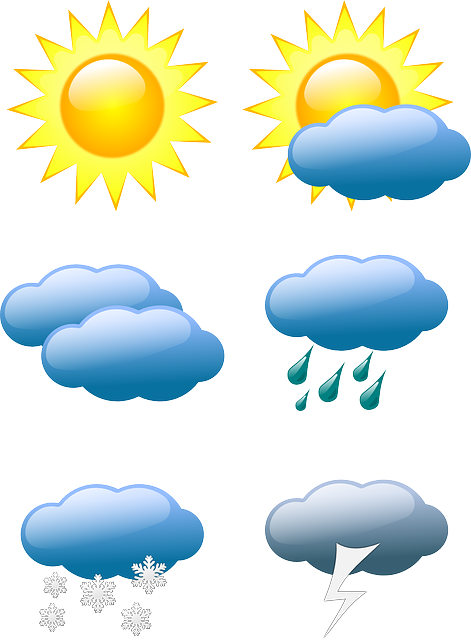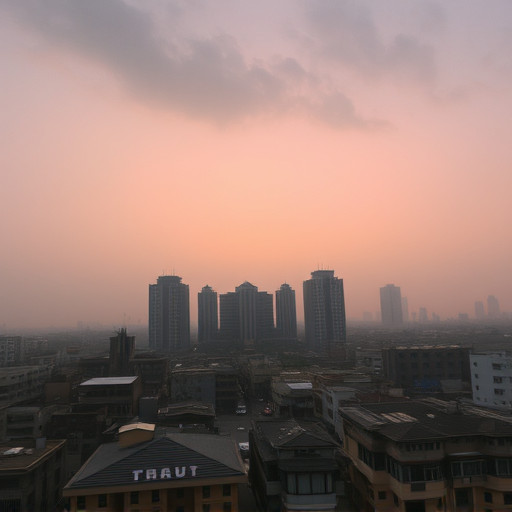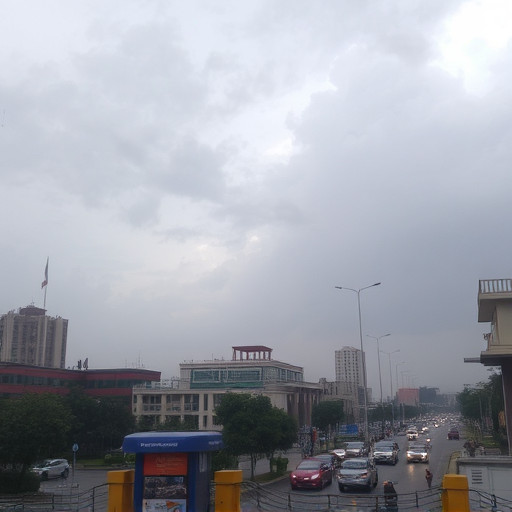
2023 sees Karachi, Pakistan, experiencing a range of climatic conditions from intense summer heat to mild winter temperatures. Summers, particularly May to September, are hot and humid with daily maximums often exceeding 40 degrees Celsius, which are then cooled by the monsoon season's rainfall from June to August. The city enjoys a respite from the heat in September to November when sea breezes offer comfort, especially in October. Winters from December to February are mild and dry with temperatures between 15 and 25 degrees Celsius. Karachi's weather is influenced by its maritime position, the Arabian Sea, and the monsoon belt, leading to significant seasonal variation. The city faces challenges with both extreme heat and heavy rains, which can cause flooding, and requires adaptive measures for infrastructure and health services to ensure resilience against these conditions throughout the year. Meteorological agencies provide crucial forecasts to help residents prepare for daily weather changes and extreme events.
As Karachi’s skies transition from the sultry hues of summer monsoons to the crisp blue of the dry spell, the city’s weather presents a fascinating mosaic that both residents and visitors navigate with intrigue. This article unravels the nuances of Karachi’s monthly climate, delving into the consistent patterns that shape its weather landscape. From the sweltering heatwaves to the occasional relief offered by the monsoon rains, understanding these seasonal shifts is crucial for planning and well-being. Daily weather trends are examined to provide a comprehensive picture of what one might expect from Karachi’s skies, ensuring preparedness amidst the unpredictable meteorological dance. Furthermore, exploring precipitation and extreme conditions offers insights into how Karachi endures both the life-giving rains and the oppressive heat. Join us as we chart the atmospheric journey of Pakistan’s coastal hub, offering valuable information for making informed decisions about your daily endeavors under the ever-changing Karachi sky.
- Monthly Climate Overview: Karachi's Weather Patterns
- Seasonal Variations: Wet vs. Dry Spells in Karachi
- Daily Weather Trends: Monitoring the Skies Above Karachi
- Precipitation and Extreme Conditions: Understanding Karachi's Rainfall and Heatwaves
Monthly Climate Overview: Karachi's Weather Patterns

Karachi, being located on the coast of the Arabian Sea in Pakistan, experiences a tropical and arid climate with distinct wet and dry seasons. The month of March marks the beginning of the summer season, where temperatures start to rise, often reaching highs of around 35 degrees Celsius or more. By May, the heat peaks, with average daily maximum temperatures soaring above 40 degrees Celsius. The monsoon season commences in June and continues through July and August, bringing much-needed relief from the intense heat. During these months, Karachi receives most of its annual precipitation, which is typically moderate, though it can be heavy at times.
The retreat of the monsoon ushers in the cooler months from September to November. The sea breeze mitigates the heat during the day and provides a refreshing chill in the evenings. October is particularly pleasant, with temperatures ranging from 25 degrees Celsius to 35 degrees Celsius, making it an ideal time to visit the city. From December to February, Karachi experiences its winter season, characterized by mild and relatively dry weather conditions. Daytime temperatures remain comfortable, usually between 15 degrees Celsius and 25 degrees Celsius, while nights can be cooler, occasionally dropping below 10 degrees Celsius. Throughout the year, Karachi’s climate is influenced by its proximity to the sea, which affects both temperature and humidity levels, leading to distinct seasonal variations.
Seasonal Variations: Wet vs. Dry Spells in Karachi

Karachi, a coastal city in Pakistan, is known for its distinct seasonal variations that shape its weather patterns. The region experiences both wet and dry spells throughout the year, which are influenced by its proximity to the Arabian Sea and its position within the monsoon belt. During the summer months, from April to July, Karachi typically endures a dry spell with high temperatures and low humidity. This period is characterized by clear skies and infrequent rainfall, making it an ideal time for outdoor activities as the city basks in the heat of the subcontinent’s summer.
However, come June to September, Karachi transitions into its monsoon season. The southwest monsoon winds bring with them a significant shift from aridity to wetness. This season is marked by heavy rainfall, which can sometimes lead to flooding in low-lying areas of the city. The increased precipitation during these months not only replenishes the city’s water reserves but also supports agricultural activities in the surrounding regions. The weather in Karachi during this time can be erratic, with occasional spells of dry weather punctuating the otherwise wet season. These seasonal variations are a testament to the dynamic nature of the region’s climate, which residents must adapt to, ensuring both preparedness for both extremes and resilience against their impacts.
Daily Weather Trends: Monitoring the Skies Above Karachi

In Karachi, the financial and cultural hub of Pakistan, the daily weather trends are a subject of keen interest among its residents. The skies above this coastal metropolis exhibit a distinct seasonal pattern, influenced by its geographical position near the Arabian Sea and its proximity to the thermal low over the Indian Ocean. Throughout the year, Karachi experiences a monsoon climate, characterized by hot, humid summers and mild winters. The summer months, from May to September, are typically marked by soaring temperatures that can often exceed 35 degrees Celsius. During this period, the city’s weather is primarily driven by the southwest monsoon winds, which bring in humid air and occasional rainfall that provides much-needed relief.
The winter season, from November to March, sees a marked drop in temperatures, with daytime highs generally remaining above 20 degrees Celsius due to the moderating effect of the nearby sea. However, nighttime temperatures can plummet, necessitating appropriate clothing for comfort. The city’s weather patterns are also influenced by the Pakistan Current, which runs parallel to the coast and affects the local climate significantly. Karachi’s weather is closely monitored by meteorological agencies, with regular updates on temperature trends, humidity levels, atmospheric pressure, and precipitation. This continuous monitoring is essential for preparing weather forecasts that inform the public about daily conditions, enabling them to plan their activities accordingly and ensuring safety during extreme weather events.
Precipitation and Extreme Conditions: Understanding Karachi's Rainfall and Heatwaves

Karachi, a coastal metropolis in Pakistan, experiences a varied climate influenced by its proximity to the Arabian Sea. Typically, the city’s precipitation pattern is modest, with most of the rainfall occurring during the monsoon season from June to September. During these months, the city can receive a significant portion of its annual rainfall, which usually ranges between 200 and 300 millimeters. The monsoon rains are crucial for the region’s agriculture and water reserves but can also lead to flooding and associated challenges due to urban infrastructure strains and drainage issues.
In contrast to its wet season, Karachi is known for its scorching heat during the summer months, with temperatures often exceeding 35 degrees Celsius. The city occasionally faces extreme heatwaves that can last for weeks, posing health risks, particularly for vulnerable populations. These conditions are exacerbated by the urban heat island effect, where built-up areas absorb and retain more heat than surrounding rural regions. Heatwaves in Karachi necessitate heightened vigilance and adaptive measures to mitigate their impact on daily life, infrastructure, and health services. Understanding these climatic extremes is essential for local authorities and communities to prepare effectively and ensure the well-being of residents throughout the year.
Based on the comprehensive analysis presented in the article, it is evident that Karachi’s weather patterns exhibit significant seasonal variations, with both wet and dry spells playing a crucial role in the city’s climate. Daily weather trends indicate a clear pattern of changing skies, highlighting the need for continuous monitoring. Precipitation and extreme conditions, such as heatwaves, are particularly noteworthy, underscoring the importance of preparedness and adaptation. In conclusion, residents and visitors alike should stay informed about the current weather in Karachi to ensure safety and comfort throughout the year.


